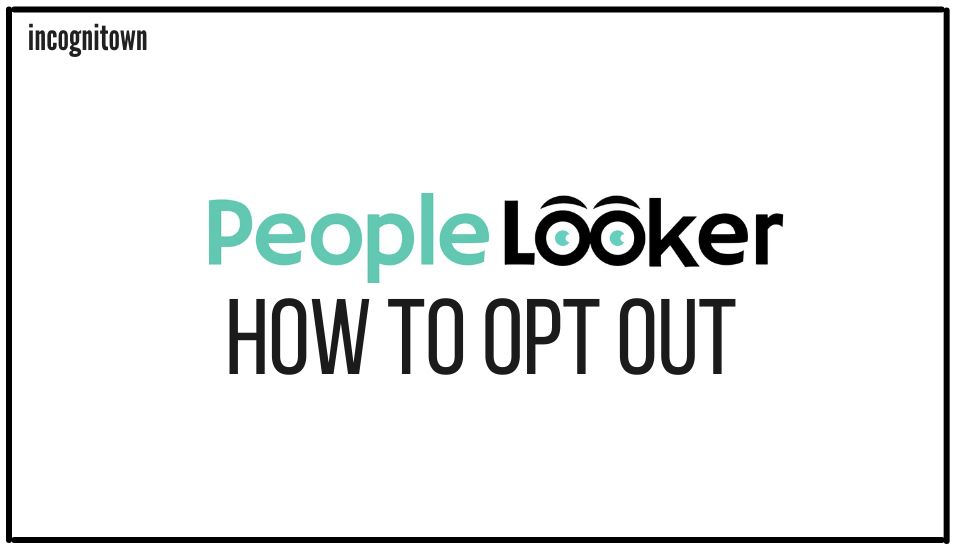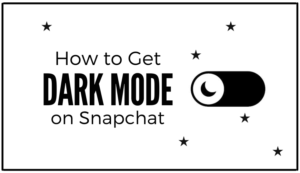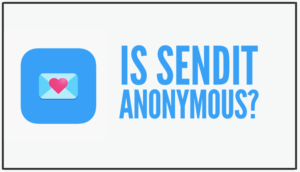Ever felt like you’re being watched? Well, you’re not entirely wrong. PeopleLooker, a data broker, has been collecting and selling your personal information, making you an easy target for identity theft, stalking, and more.
This guide is your roadmap to reclaiming your privacy by opting out of PeopleLooker. We’ll walk you through automated tools, manual steps, and answer all your burning questions.
So, without further ado, let’s get started on taking back control over your personal data.
Table of Contents
- What is PeopleLooker? The Uninvited Snoop in Your Digital Life
- Why Opt-Out of PeopleLooker? Protecting Your Digital and Physical Space
- Manual Opt-Out Process: Reclaim Your Privacy in Three Steps
- Automated Tools for Opting Out: Efficiency Meets Privacy
a. Incogni: The Emerging Choice
b. DeleteMe: The Established Option
c. PrivacyBee: The Budget-Friendly Alternative
d. The Decision Factor - FAQs: Clearing the Air on PeopleLooker Opt-Out
- Conclusion: Take Control of Your Data, Take Control of Your Life
1. What is PeopleLooker?
PeopleLooker is an online database that aggregates personal information from various sources into a single profile. It’s a one-stop shop for anyone looking to find details about you, and it’s more intrusive than you might think.
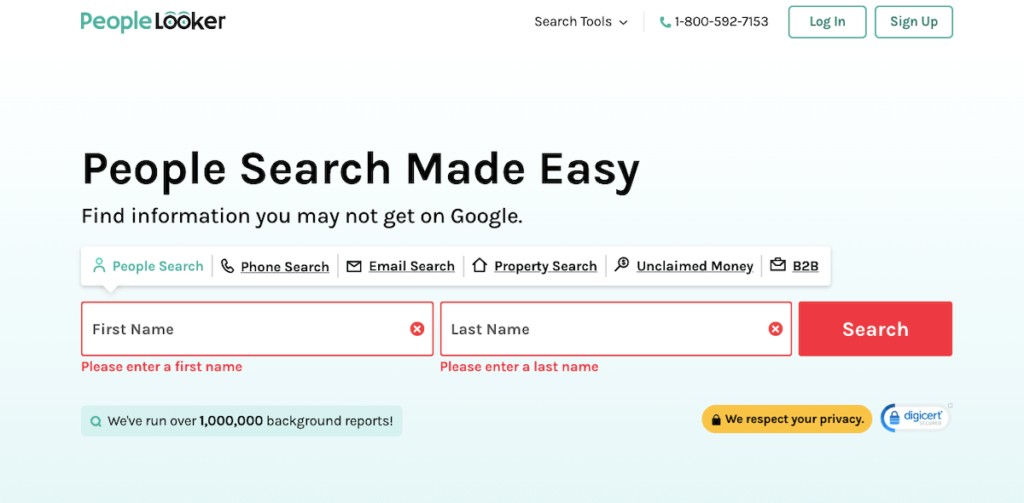
How does PeopleLooker work?
PeopleLooker pulls information from public records, social media platforms, and other online databases. It compiles everything from your contact details and address history to potentially sensitive information like criminal records. The unsettling part is that all of this is done without your explicit consent.
Why is it an issue for privacy and safety?
While the information may be publicly available, the problem lies in its aggregation. PeopleLooker makes it incredibly easy for anyone to access a comprehensive profile about you. This ease of access elevates the risk of identity theft, scams, and phishing attacks. Your data is not just out there; it’s now conveniently accessible to anyone who seeks it.
The safety implications are severe. With your personal details readily available, you become an easier target for harassers and potential stalkers. The platform essentially amplifies the risk of real-world harm by making your personal information easily accessible.
2. Why Opt-Out of PeopleLooker?
PeopleLooker is a potential threat to your safety and privacy. So, let’s delve into why opting out is not just advisable but necessary.
a. Privacy at Stake
Opting out of PeopleLooker isn’t just a matter of preference; it’s a crucial step in safeguarding your privacy. The platform’s comprehensive profiles make it a goldmine for anyone with ill intentions. Identity thieves, in particular, could use the easily accessible information to impersonate you, open new accounts, or even commit fraud in your name.
b. Safety Risks: Not Just Online
The safety risks extend beyond the digital realm. With your personal details out in the open, you’re more susceptible to stalking and harassment. The information could be used to track your movements, discover your daily routines, and even find out where you live. In essence, PeopleLooker can inadvertently serve as a toolkit for potential stalkers.
The risks are real and immediate. Every day your information remains on PeopleLooker is another day you’re exposed to potential harm. The platform’s ease of access to your data amplifies these risks, making it urgent for you to take action.
3. How to Opt-Out from PeopleLooker in Three Steps.
If you’re not keen on using automated tools and prefer to take matters into your own hands, opting out of PeopleLooker manually is a viable option. Here’s a step-by-step guide to help you navigate the process efficiently.
Step 1: Record Search
- Navigate to the Opt-Out Page: The first step is to go to PeopleLooker’s “Don’t Sell My Data” page. This is where you’ll initiate the opt-out process.
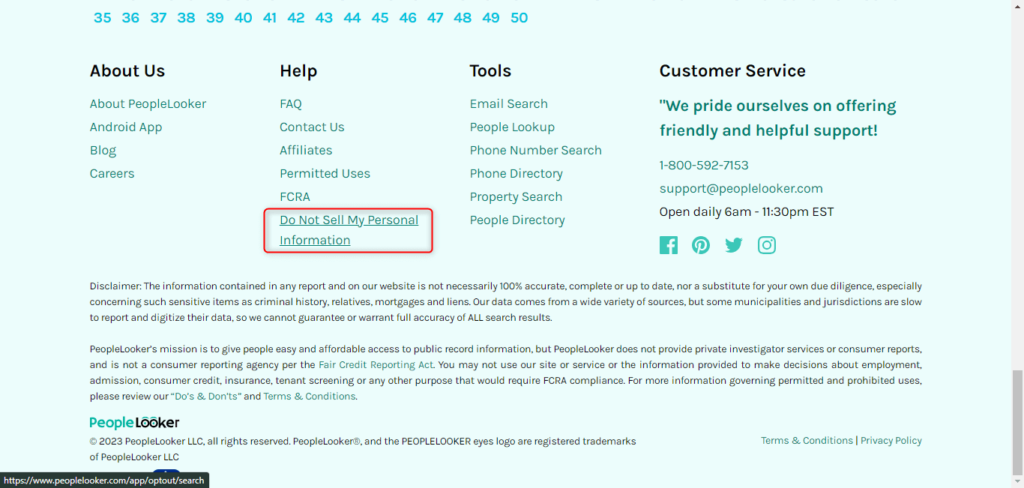
Source: https://www.peoplelooker.com/
- Enter Your Details: You’ll be prompted to enter your first and last name. Make sure to enter them accurately to find any matching records.
Step 2: Send Your Request
- Locate Your Record: Once you’ve entered your details, you’ll see a list of matching records. Find the one that corresponds to you.
- Proceed to Opt-Out: Click the “Proceed to Opt-Out” button next to your record.
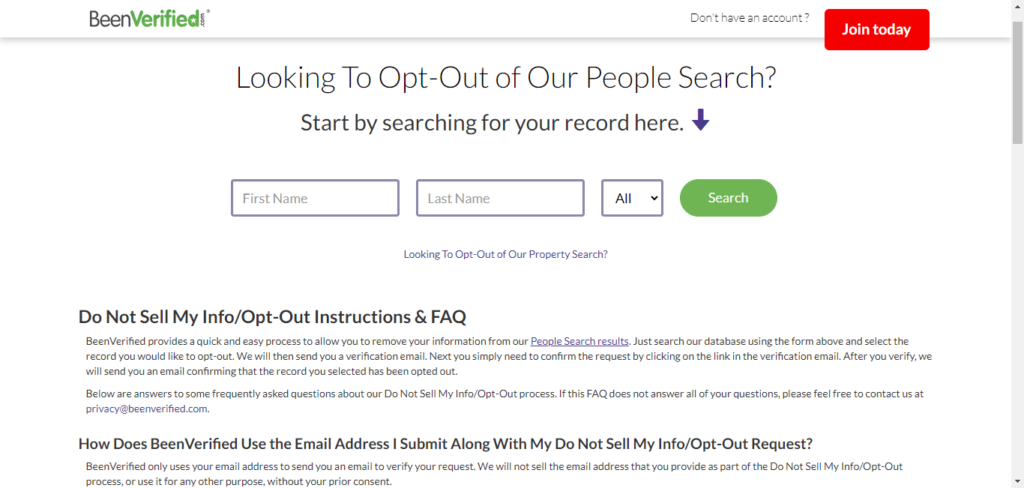
Source: https://www.peoplelooker.com/
- Enter Your Email: You’ll be asked to enter a valid email address. Make sure it’s one you have access to, as you’ll need it for verification.
- Complete the CAPTCHA: Before you can proceed, you’ll need to complete a CAPTCHA to prove you’re not a robot.
- Send Verification Email: Once the CAPTCHA is complete, click the “Send Verification Email” button.
Step 3: Finalize Your Request
- Check Your Email: Open your email and look for a message from PeopleLooker.
- Click the Verification Link: The email will contain a verification link. Click it to finalize the opt-out process.
- Receive Confirmation: After clicking the verification link, you’ll receive a final confirmation email from PeopleLooker. This email acknowledges that your records will be removed from their database and instructs their data partners to do the same.
And there you have it—a foolproof guide to manually opting out of PeopleLooker. Each step is crucial, so make sure to follow them carefully.
By the end of this process, you should have successfully removed your personal information from PeopleLooker’s database, taking a significant step in reclaiming your online privacy.
4. Automated Tools for Opting Out: Efficiency Meets Privacy
If you’re looking for a quick exit from PeopleLooker’s database, automated tools are your best bet. These services specialize in removing your personal information from data broker websites, saving you time and effort. Let’s delve into three popular options:
a. Incogni: The Emerging Choice
Incogni is a relatively new player in the data removal service industry. It aims to simplify the process of opting out from various data broker websites, including PeopleLooker.
- Pros: Incogni offers a user-friendly interface and a one-time removal option, making it a cost-effective choice for those looking to dip their toes into data privacy.
- Cons: Being a newer service, its long-term effectiveness is still under review. mentions that while Incogni shows promise, it’s still building its track record.
b. DeleteMe: The Established Option
DeleteMe has been a trusted name in the data removal industry for years. It offers a comprehensive service that includes quarterly updates to ensure your data remains off these databases.
- Pros: DeleteMe is known for its thorough and effective service. PCMag rates it highly for its comprehensive coverage and regular updates.
- Cons: The service is subscription-based, which can be costly for some users. The ongoing expense is something to consider when opting for DeleteMe.
c. PrivacyBee: The Budget-Friendly Alternative
PrivacyBee offers a more budget-friendly approach to data removal, focusing on affordability without sacrificing effectiveness.
- Pros: PrivacyBee is less expensive than DeleteMe and even offers a family plan, making it a good option for households.
- Cons: While generally effective, some users have reported issues with customer service. Trustpilot reviews indicate that while the service is affordable, customer service responsiveness could be improved.
Your choice among these tools will depend on your budget, the level of service you desire, and how much you trust the service’s effectiveness. Each has its own set of advantages and disadvantages, so weigh your options carefully.
Automated tools can be a convenient way to reclaim your privacy, but they’re not all created equal. Make sure to do your due diligence before making a selection.
5. FAQs: Clearing the Air on PeopleLooker Opt-Out
a. If I opt-out of PeopleLooker, will my data reappear?
One of the most common concerns is whether your data will reappear on PeopleLooker after opting out. The answer is generally no. Once you’ve successfully opted out, PeopleLooker removes your data and instructs its data partners to do the same. However, it’s a good idea to periodically check to ensure your data hasn’t resurfaced, especially if you’ve had recent public records created.
b. Is opting out of PeopleLooker free?
Yes, opting out of PeopleLooker is completely free, whether you choose to do it manually or use their online opt-out form. Some third-party services may charge a fee for automated removal, but the manual process outlined in this guide is cost-free.
c. How long does the process of opting out of PeopleLooking take?
The manual opt-out process is relatively quick and can be completed in a few minutes. However, it may take up to 48 hours for your data to be fully removed from the PeopleLooker database.
d. Do I need to provide personal information to opt out?
To opt-out, you’ll need to provide a valid email address for verification purposes. Rest assured, this is a necessary step to confirm your identity and complete the removal process.
e. Can I opt out of PeopleLooker for someone else?
PeopleLooker’s policy typically requires individuals to opt out for themselves. You cannot opt-out on behalf of someone else unless you have legal authorization to do so.
These FAQs aim to clear up any lingering doubts you may have about the opt-out process. The goal is to empower you to take control of your personal information without any second-guessing.
6. Conclusion. Opting out from PeopleLooker is a wise decision!
You’ve now got the tools and knowledge to opt out of PeopleLooker and protect your personal information. Whether you choose an automated service or go the manual route, the important thing is to act.
Your privacy and safety are too valuable to leave in the hands of data brokers. By following this guide, you’re not just removing your data from a database; you’re reclaiming your right to privacy. So don’t wait—take the steps today to ensure you’re not an easy target for anyone who might misuse your information.

